Gone to the dogs
A story of finding companionship in a nuclear wasteland
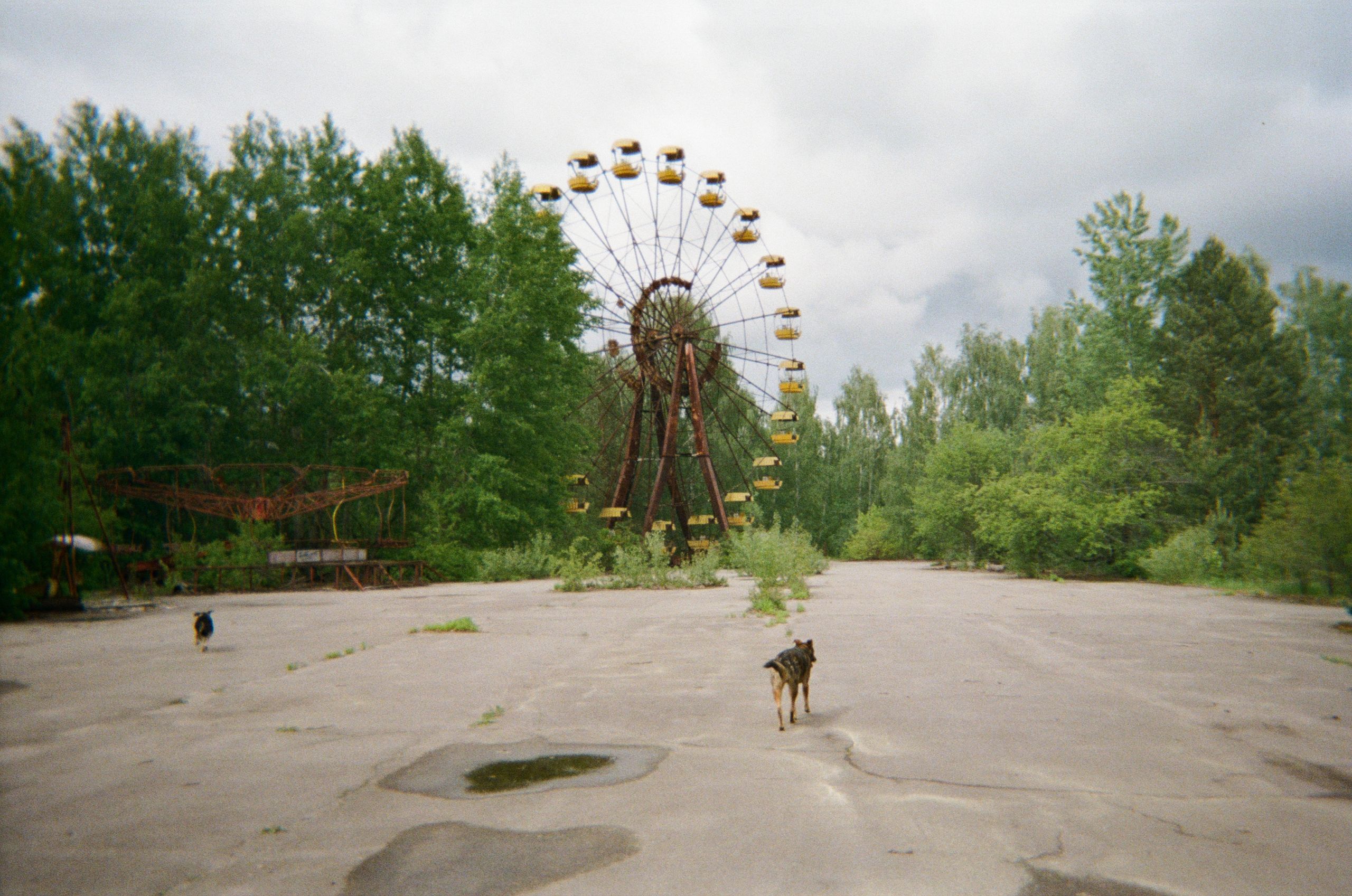
Guarding the site of the worst nuclear accident in history is a lonely job. Isolated from the outside world with the ghosts of an abandoned city and villages, workers in the Chernobyl Exclusion Zone seek company from something you might not expect to see in such an apocalyptic place: dogs.
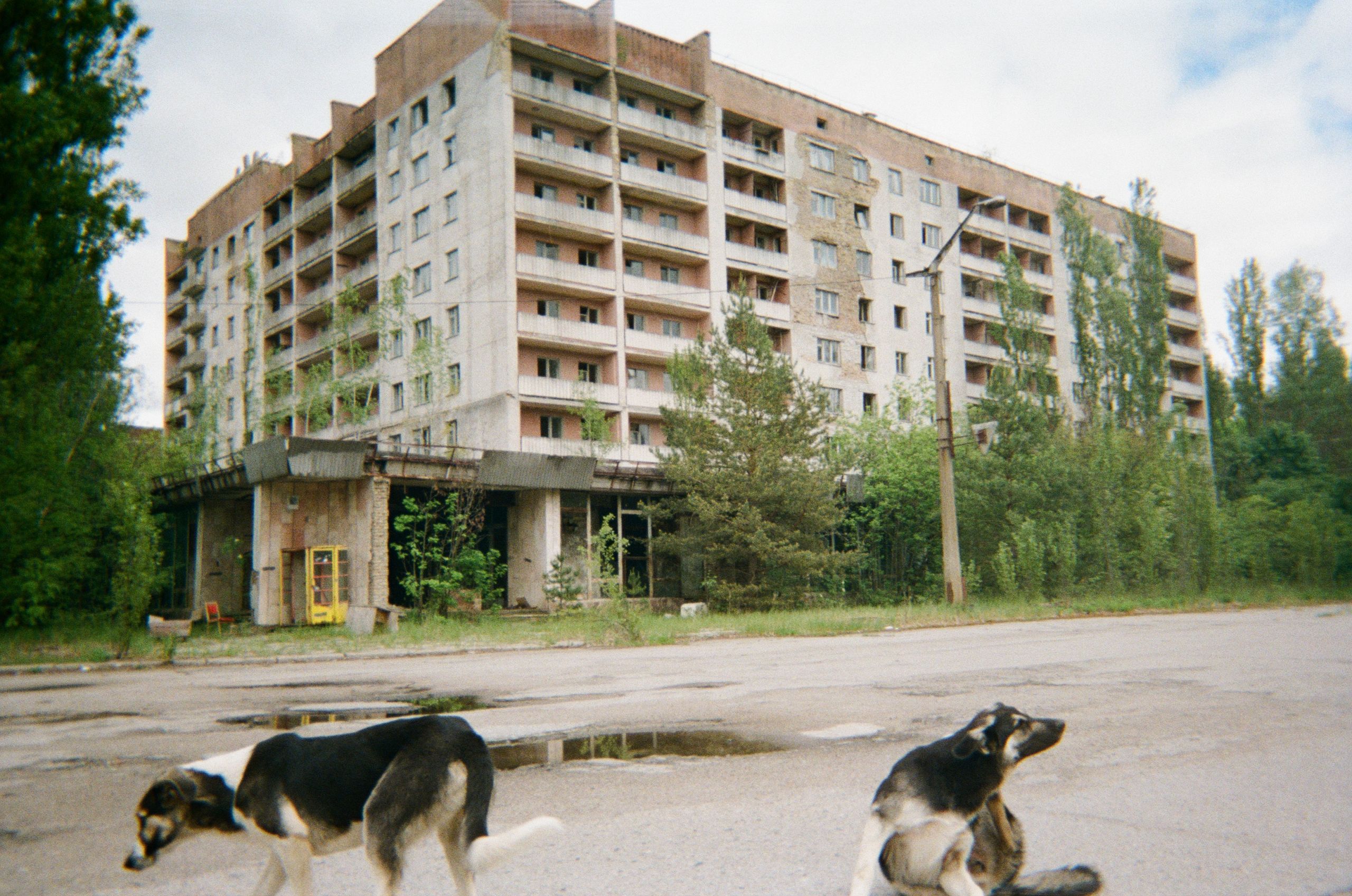
A pair of free-roaming dogs in front of an abandoned building in Pripyat. Image credit: Jonathon Turnbull/Chernobyl Guards
A pair of free-roaming dogs in front of an abandoned building in Pripyat. Image credit: Jonathon Turnbull/Chernobyl Guards
The unexpected relationship between hundreds of stray dogs and human guards in the Exclusion Zone surrounding the Chernobyl Nuclear Power Plant is the focus of new research by a University of Cambridge academic, thirty-five years after the accident left an area of 1,000 sq. miles uninhabitable for many years.
During his research, Jonathon Turnbull, a PhD candidate in the Department of Geography, gave several disposable cameras to checkpoint guards in the Exclusion Zone and one to a shopkeeper working in a convenience store for workers, encouraging them to take pictures of their everyday lives with the dogs. He later followed up with interviews and phone calls with the photographers.
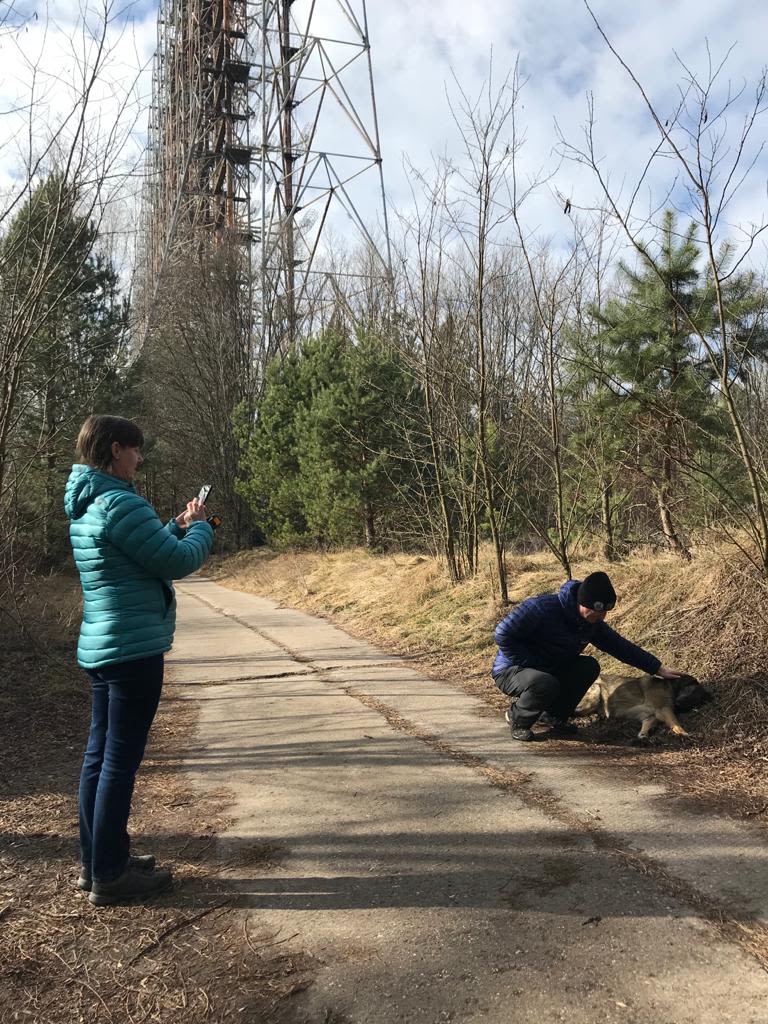
Tourists meet a dog, Tarzan, near the Duga-2 antenna (Russian Woodpecker) in the Zone. Image credit: Jonathon Turnbull
Tourists meet a dog, Tarzan, near the Duga-2 antenna (Russian Woodpecker) in the Zone. Image credit: Jonathon Turnbull
The purpose? To begin to understand their relationships with the stray dogs, which are suspected to have descended from the hundreds of family pets abandoned in the scramble to leave the area around Chernobyl following the release of radioactive material in April 1986 — the worst nuclear disaster in history.
"At first, they were quite shy and didn't know why someone wanted to talk to them about dogs,” says Turnbull, “but after a while they opened up. Involving them in the project by giving them cameras was a turning point. This started lots of conversations and allowed them to narrate the dogs' lives on their own terms.”
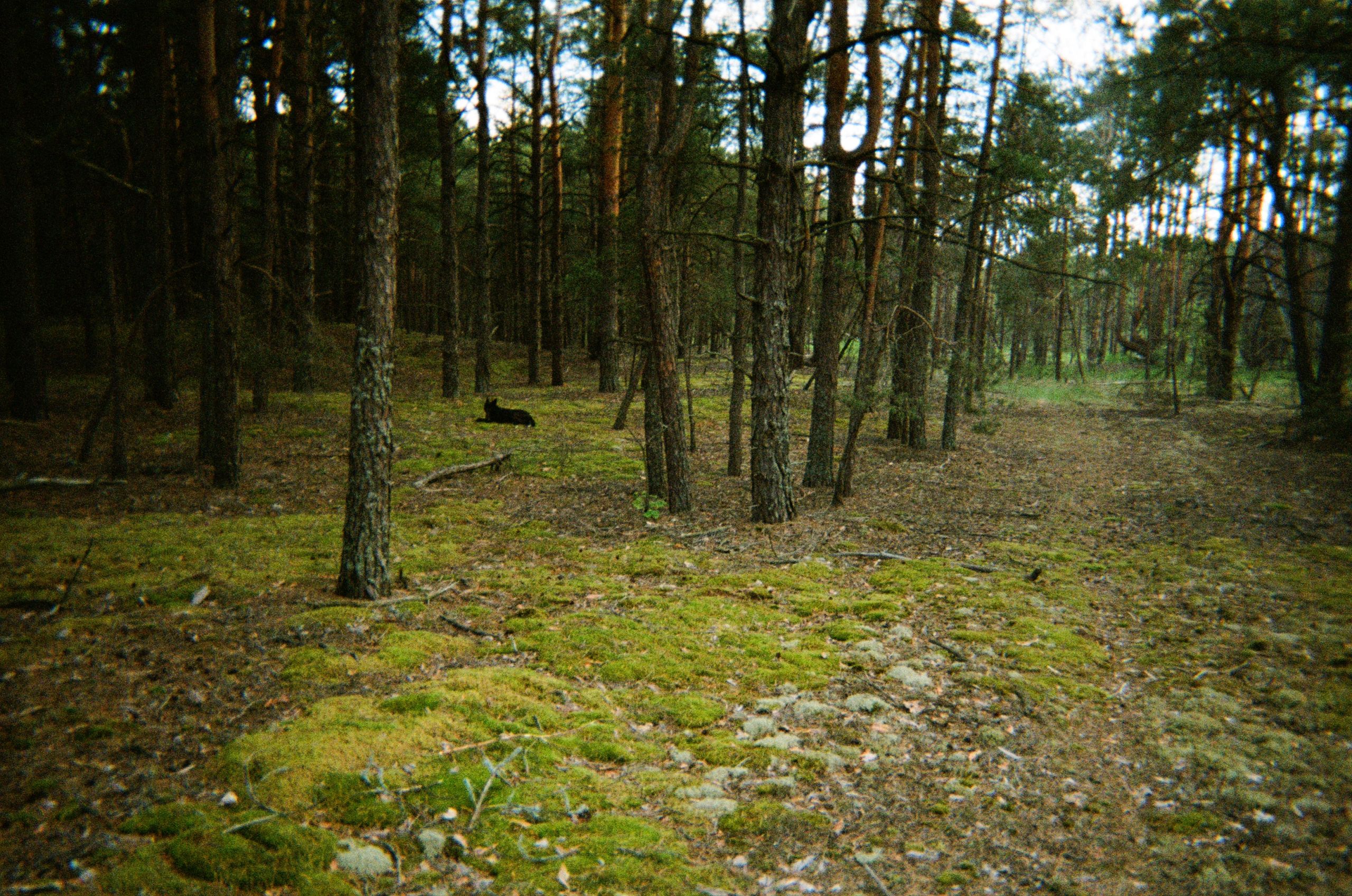
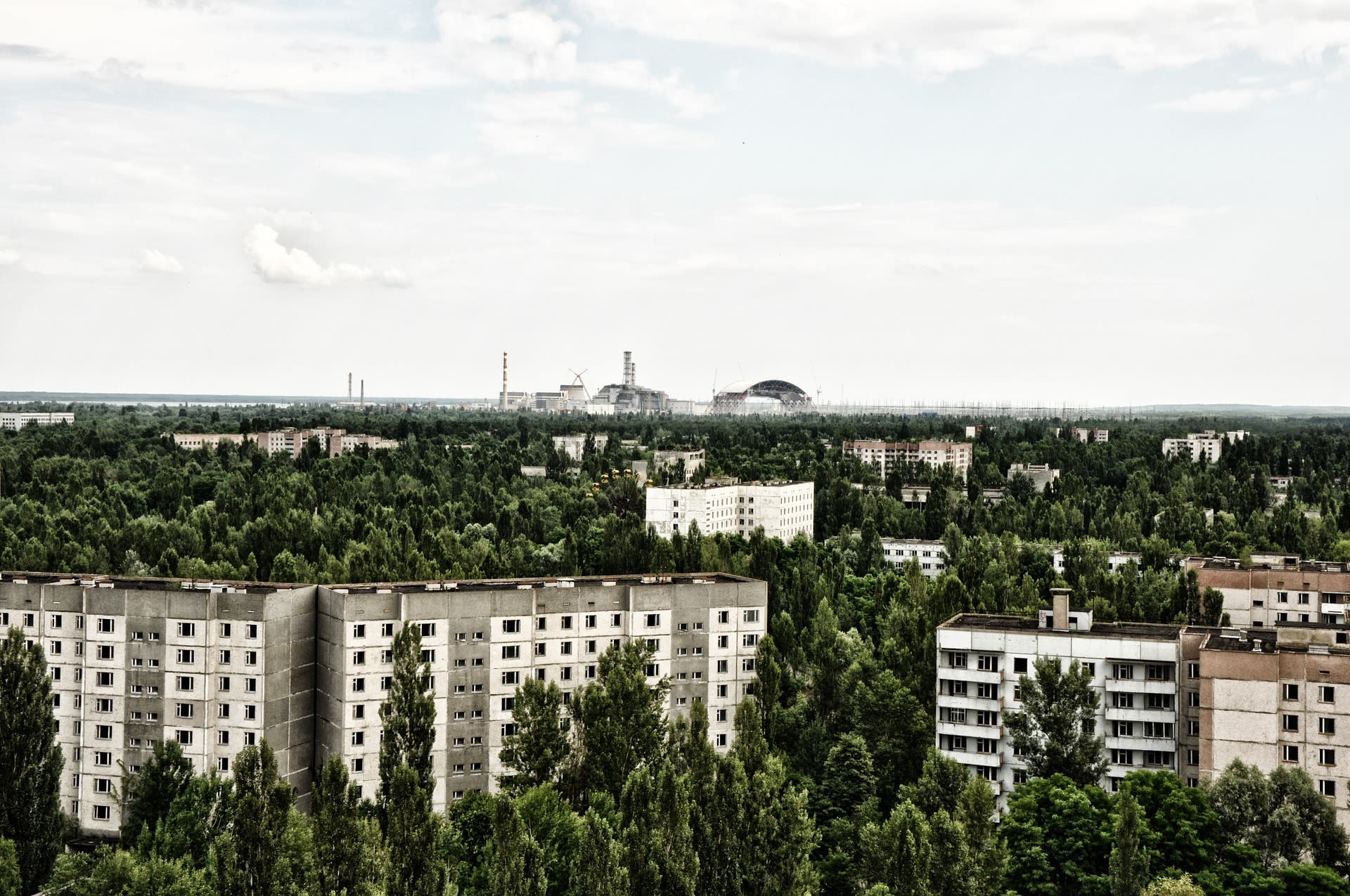
View over the city of Pripyat with the Chernobyl Power Plant in the background. Image by Денис Резник from Pixabay
View over the city of Pripyat with the Chernobyl Power Plant in the background. Image by Денис Резник from Pixabay
In the years since the disaster, the Chernobyl Exclusion Zone – an area of 4,200km2 crossing Ukraine and neighbouring Belarus – has become not only a destination for keen adventure seekers, but also, if accidentally, a haven for wildlife according to some scientists.
Many of the domestic animals that were left behind were killed by Soviet soldiers to help prevent the spread of contamination, but some hid and survived and now roam the Zone 35 years later. According to the Clean Futures Fund (CFF), a non-governmental organisation which monitors and provides care for dogs living within the Exclusion Zone, the lifespan of a Chernobyl dog is four to five years and their “greatest threat is lack of food, water and shelter during the harsh, cold Ukrainian winters,” not radiation as one might expect.
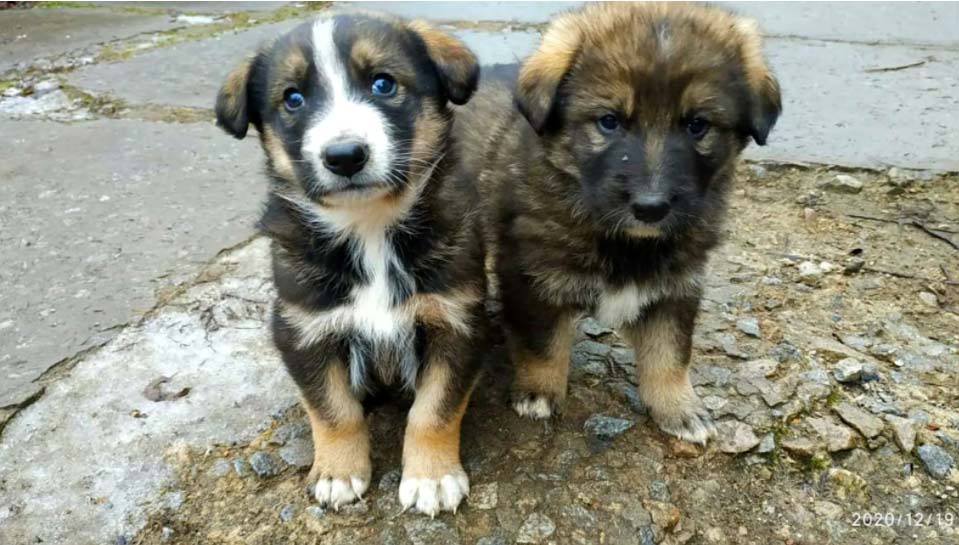
Chernobyl puppies. Image credit: Jonathon Turnbull/Chernobyl Guards
Chernobyl puppies. Image credit: Jonathon Turnbull/Chernobyl Guards
Today, there are over 500 dogs living at different locations around the Zone, many of whom are thought to be the descendants of the dogs left behind in 1986. After being driven out of the wilderness by hunger and predators and towards the areas where humans work, the dogs are now managed by the CFF, who control their “overpopulation” with spay/neuter programmes.
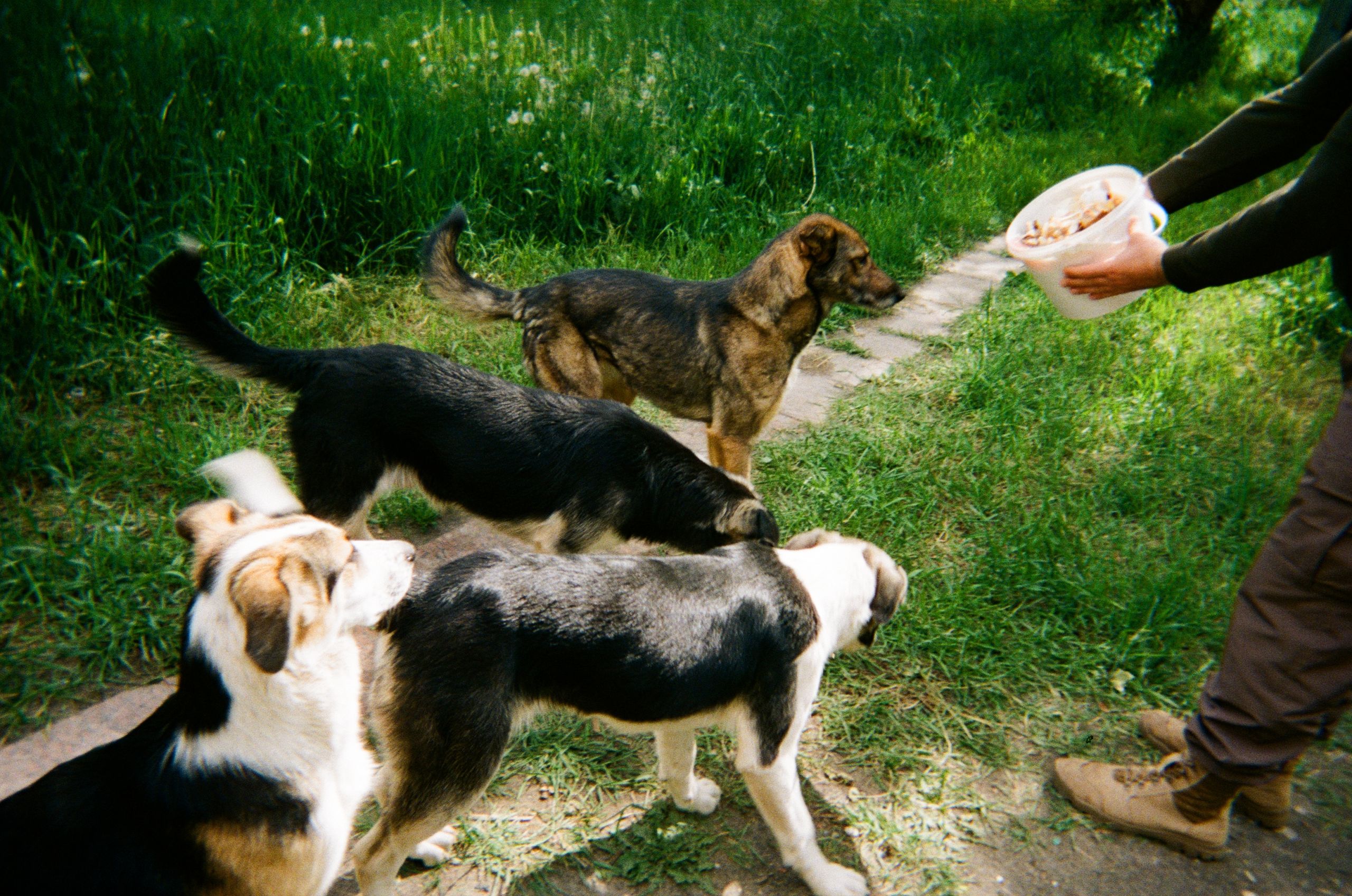
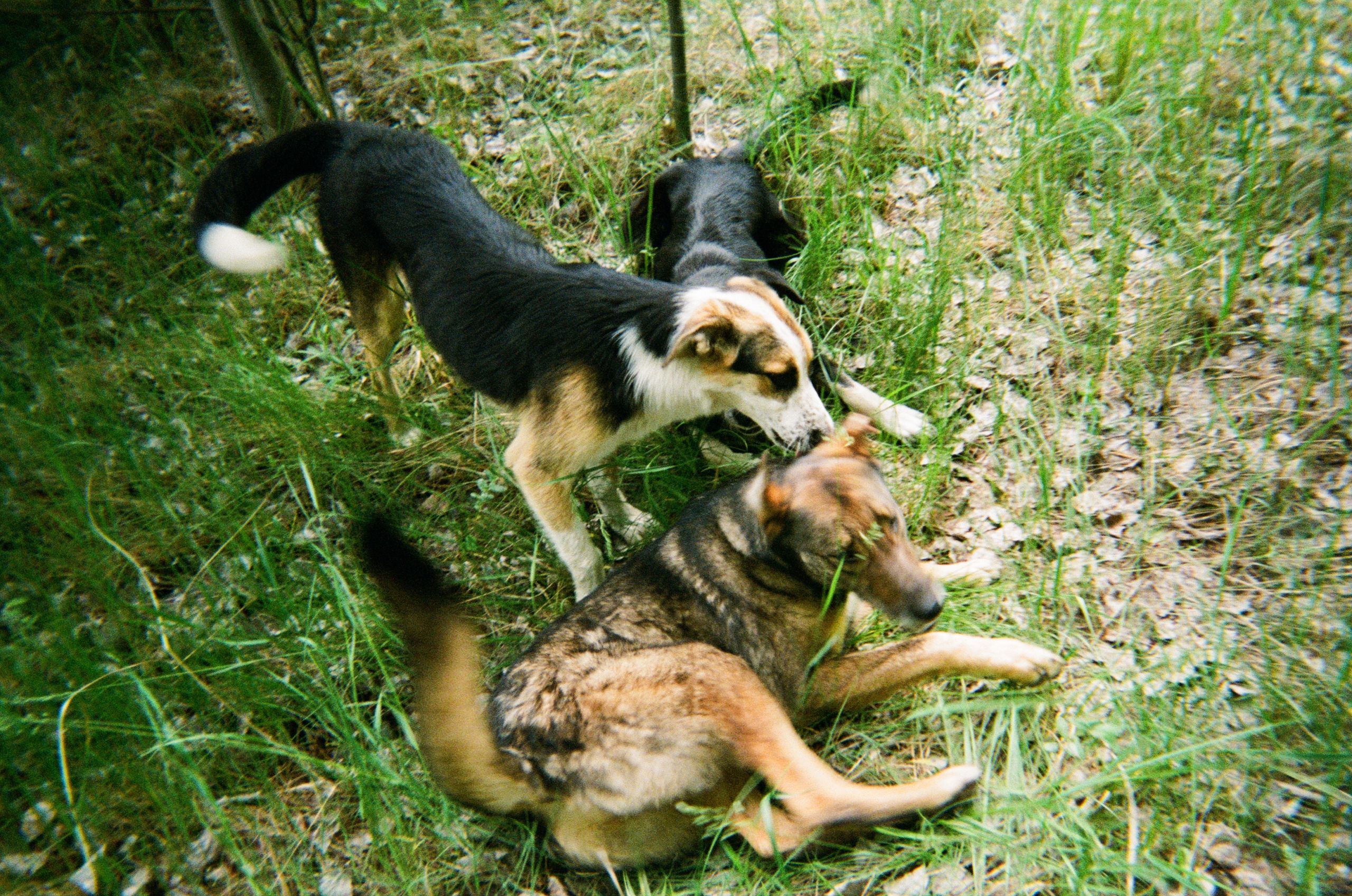
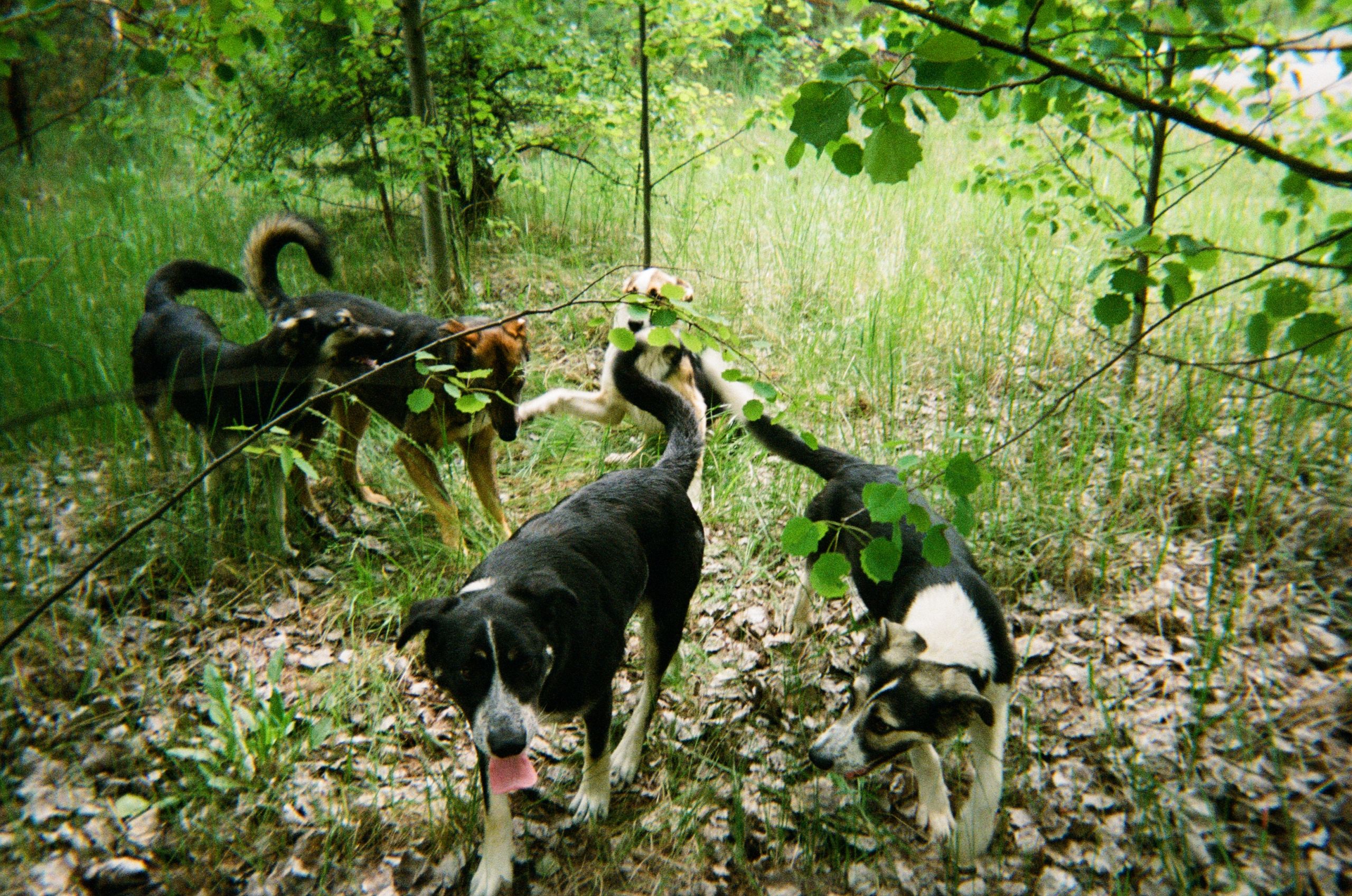
Turnbull, who lives in Kyiv, is a cultural and environmental geographer interested in the human-animal relations emerging in the Chernobyl Exclusion Zone.
To understand the relationship between the checkpoint guards and other workers, and the dogs in the Zone, he has been conducting multispecies ethnographic work and using semi-structured interviews combined with two techniques known as photovoice and photo-elicitation. Photovoice involves encouraging participants to use photography to tell stories about their lives, while photo-elicitation involves the insertion of photographs into interviews to evoke information, feelings and memories.
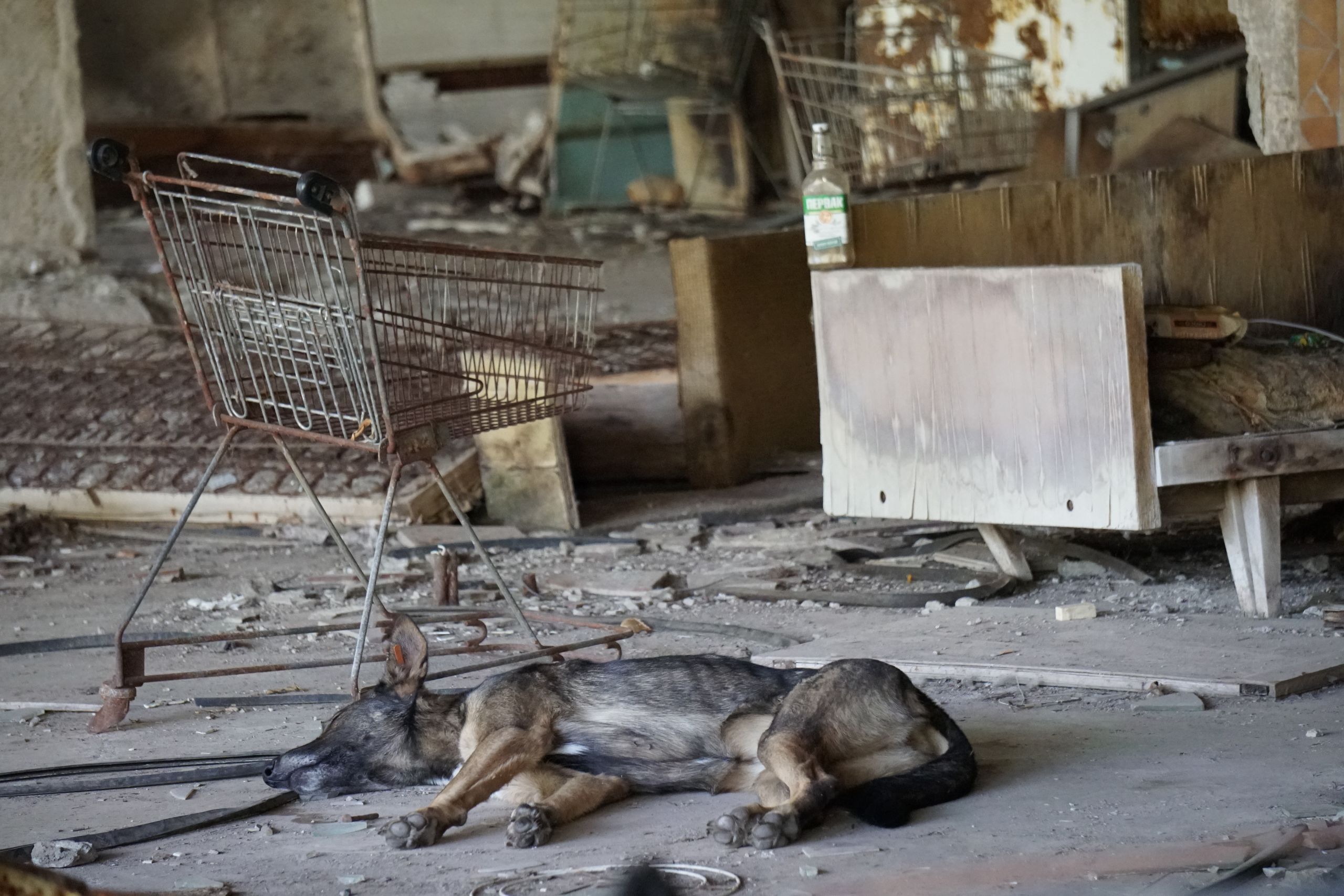
Sleeping dog in an abandoned supermarket of Pripyat. Image credit: Romain Chollet on Unsplash
Sleeping dog in an abandoned supermarket of Pripyat. Image credit: Romain Chollet on Unsplash
Access to the Exclusion Zone is strictly prohibited and requires a permit and, normally, an official tour guide. Several guards protect and man checkpoints in and out of the Zone, a place where the Chernobyl dogs seek food, medical care and comfort.
The dogs that roam the land around the Power Plant have been labelled stray, homeless, street and feral by various organisations and scientists, “implying that they are unowned or ownerless.” Turnbull notes that the guards present a rather different picture, one of affection and care, as well as a “distributed sense of ownership,” which has, on occasion, led to the same dogs having multiple names.
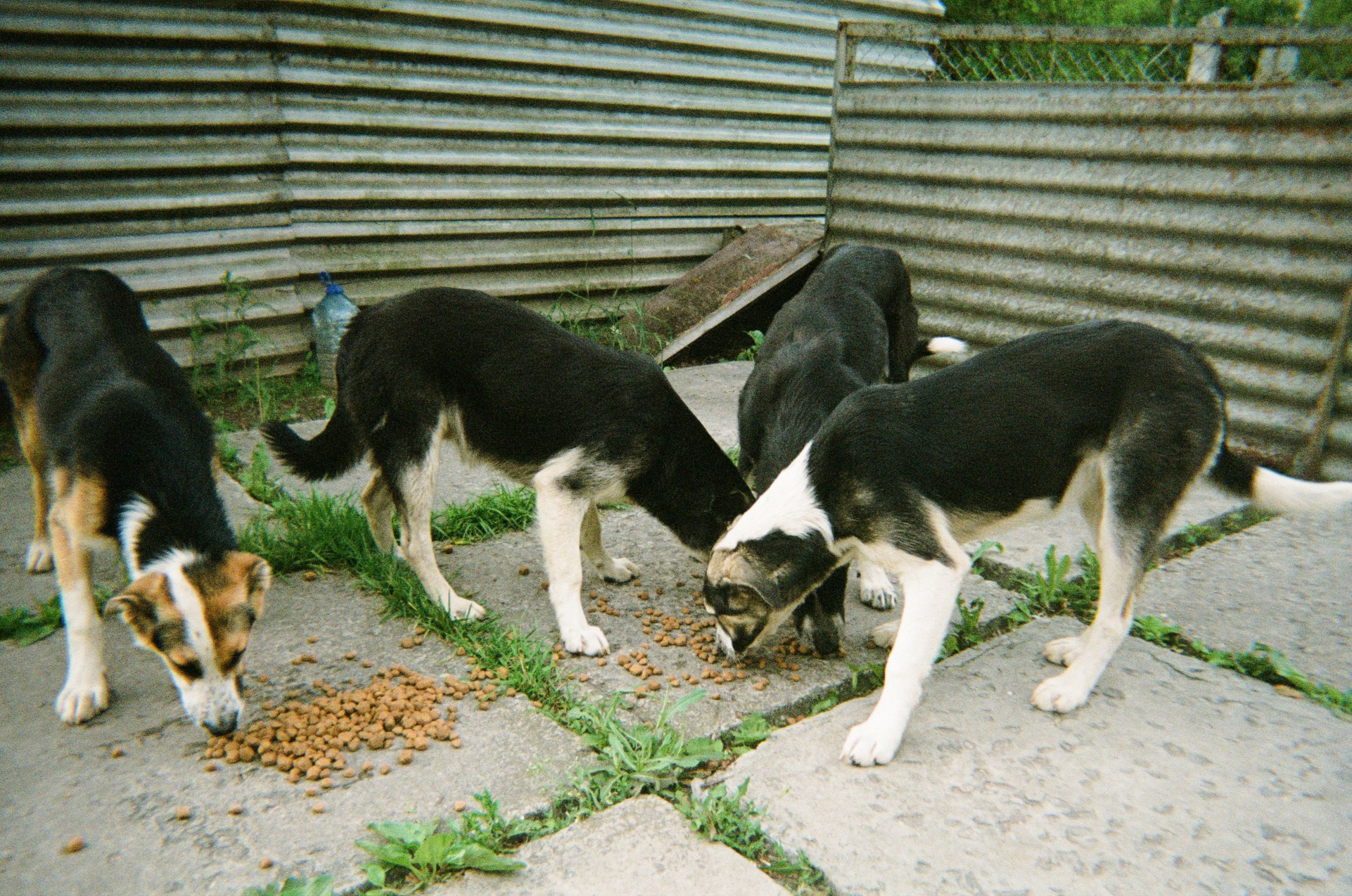
Feeding time. Image credit: Jonathon Turnbull/Chernobyl Guards
Feeding time. Image credit: Jonathon Turnbull/Chernobyl Guards
Furthermore, the dogs provide a kind of service to the guards: they offer comfort, entertainment and protection from wolves as well as preventing boredom and loneliness during what can sometimes be monotonous shift work.
This support is reciprocated: what is clear to see from the interviews with the guards is the level of affection shown to the dogs by providing a basic level of veterinary care to those animals in need. “We pull out ticks ourselves,” one guard remarked, as well as buying injections for rabies.
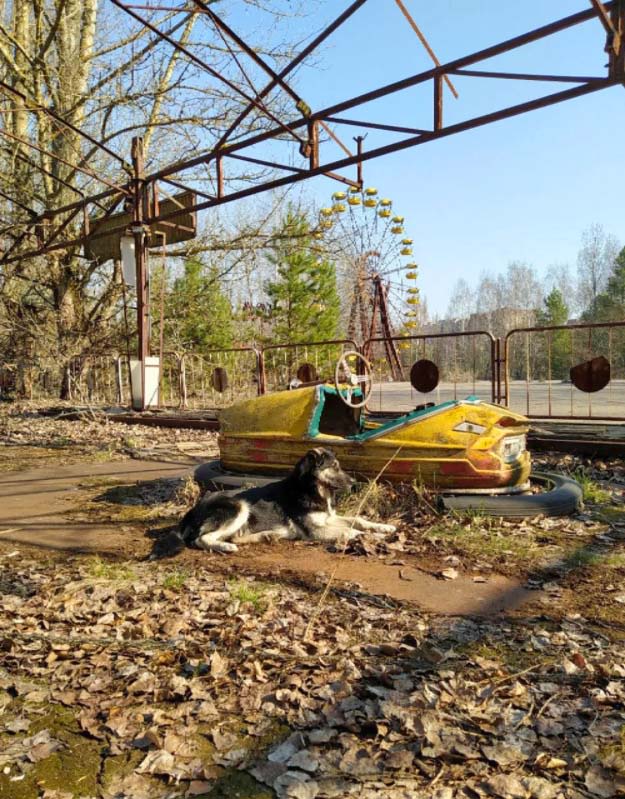
A dog sitting in an abandoned fairground ride. Image credit: Jonathon Turnbull/Chernobyl Guards
A dog sitting in an abandoned fairground ride. Image credit: Jonathon Turnbull/Chernobyl Guards
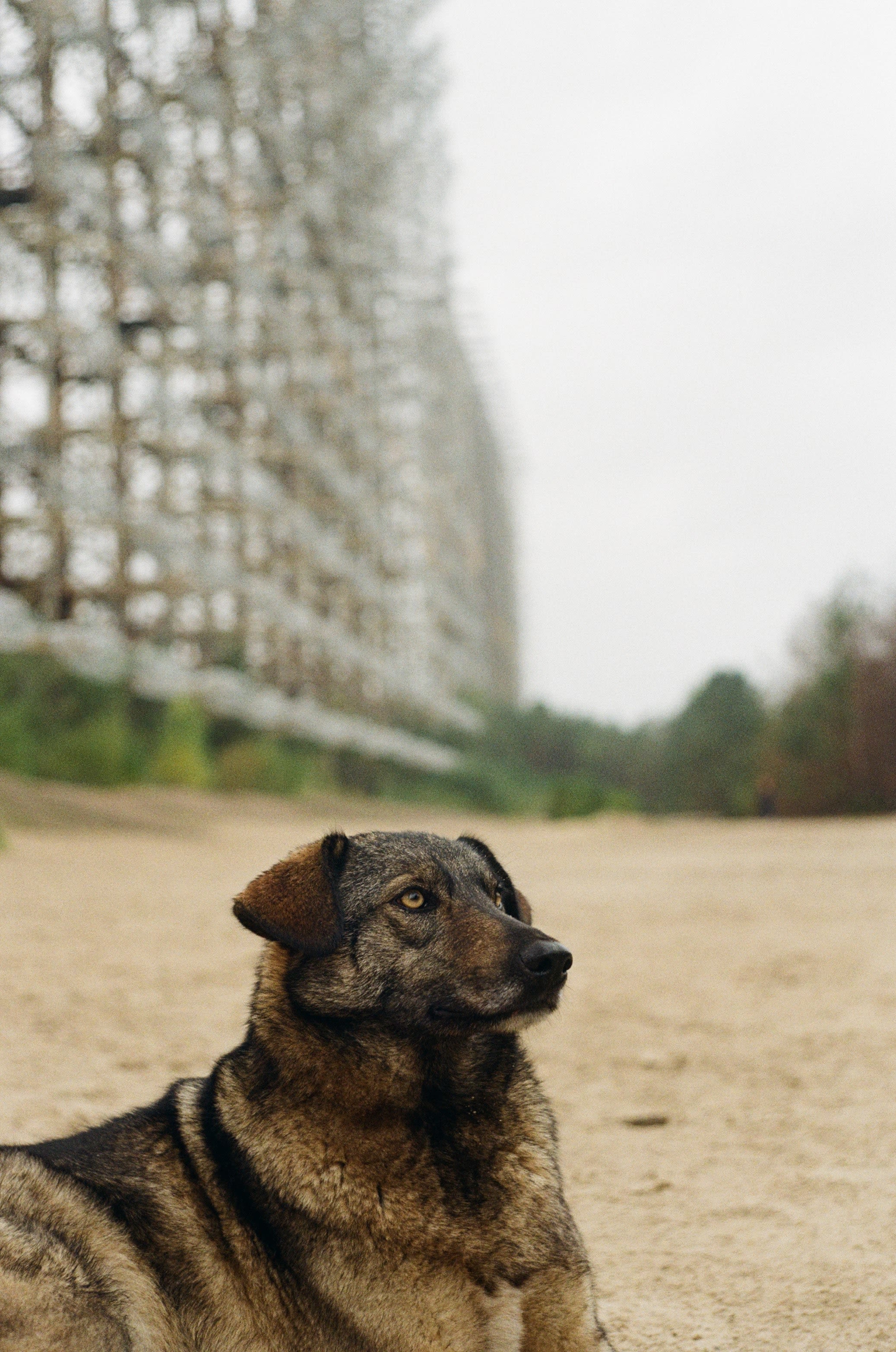
Tarzan sits near the Duga-2 antenna in the Zone. Image credit: Dasha Urvachova on Unsplash
Tarzan sits near the Duga-2 antenna in the Zone. Image credit: Dasha Urvachova on Unsplash
Many of the photos taken by the guards show dogs walking by the iconic Ferris wheel at the centre of the Zone as well as swimming in rivers and forests. They also show dogs accompanying the guards on their patrols throughout the city of Pripyat.
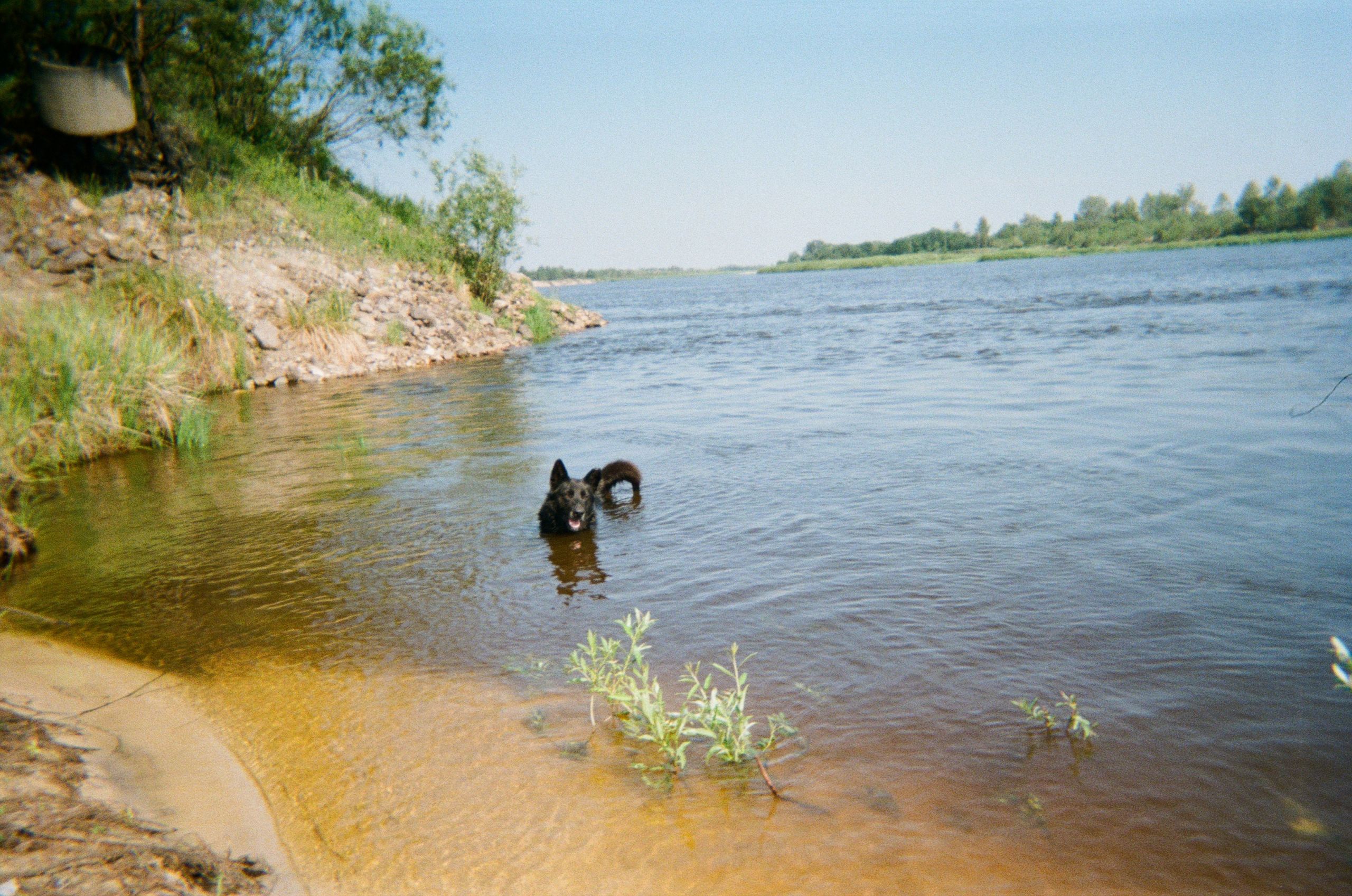
Turnbull adds: “I think telling the stories of the guards' relationships with the dogs is really important as it gives people an idea of what everyday life looks like in the aftermath of a nuclear disaster. But more importantly, the photovoicing technique allowed them to tell their own story, rather than have it depicted by an outsider.”
One of guards noted that his favourite photo was one which showed the dogs being fed leftover food, and another said, “I made a house […] for the dogs to have a place to hide from snow and rain.” What is shown here is the hospitality given to the dogs by the guards despite a worker noting “they are not our dogs personally.”
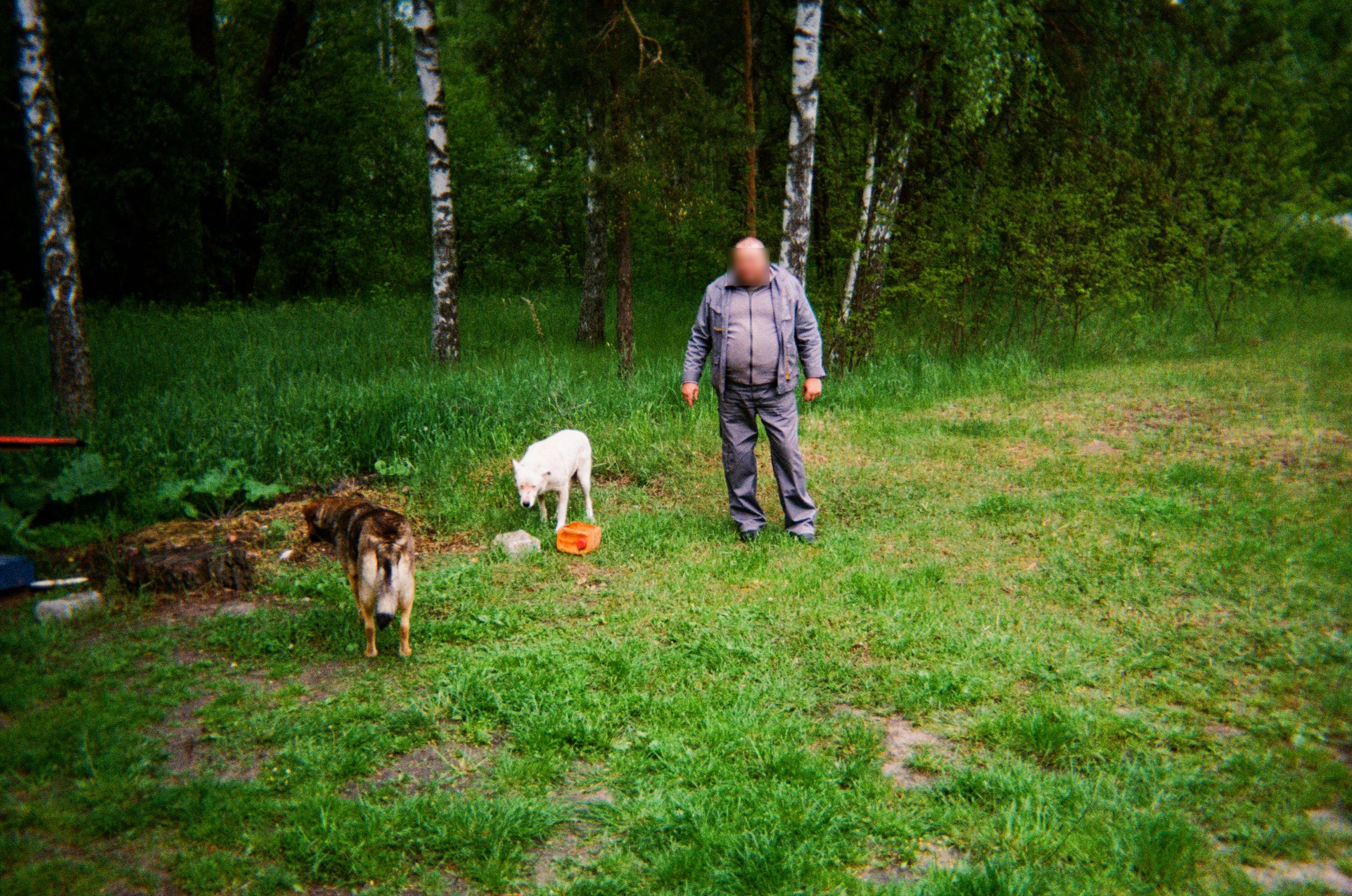
A guard with the two dogs living at his checkpoint. Image credit: Jonathon Turnbull/Chernobyl Guards
A guard with the two dogs living at his checkpoint. Image credit: Jonathon Turnbull/Chernobyl Guards
The dogs’ “wildness” and “territoriality” is discussed by the guards, too, with the shop worker noting that “the dogs get jealous when new dogs arrive,” and that they will fiercely defend their territory. Yet another guard asks, “why are they wild?” He paints a picture that could be seen in homes with dogs across the world: “they live here, they communicate with tourists […] they even learned commands from an early age.” The same guard went on to point out that if the dogs were indeed wild, they could run away and live elsewhere at any time, yet they choose not to.
The dogs seem to have a choice, and that choice is to stay close to food, shelter and company.
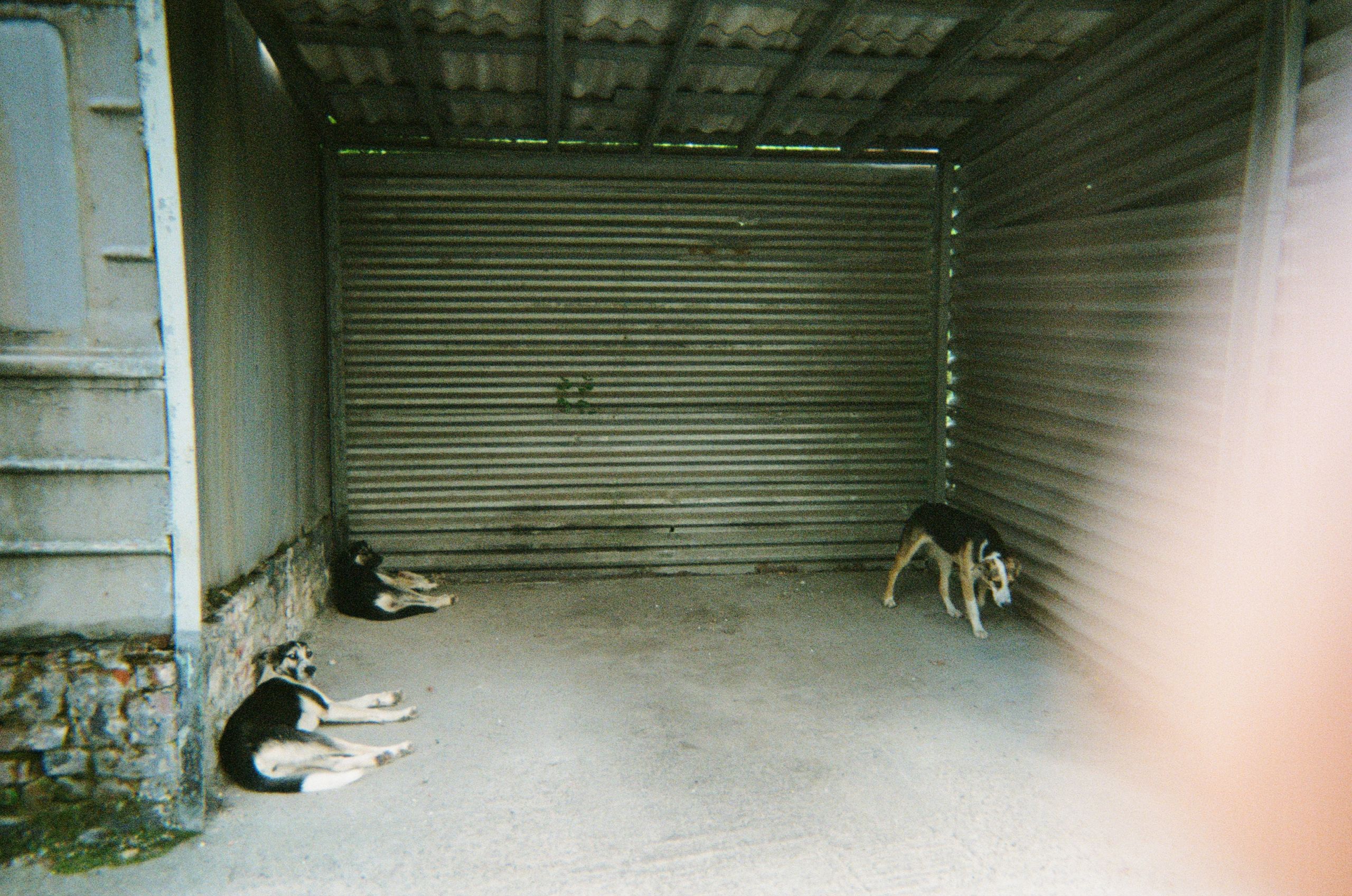
Dogs sleep and take shelter in abandoned buildings and structures. Image credit: Jonathon Turnbull/Chernobyl Guards
Dogs sleep and take shelter in abandoned buildings and structures. Image credit: Jonathon Turnbull/Chernobyl Guards
While parts of the landscape will remain uninhabitable for potentially up to 20,000 years, it is clear that for some of the guards and workers in the Zone, the dogs provide something resembling a sense of home and normality in what has been described as an “apocalyptic Eden.”
The Zone itself has iconic status within popular culture and has become a tourist destination for those wanting to see the abandoned city of Pripyat. The dogs themselves have now become quite the attraction, too, gaining large followers on social media sites such as Instagram. During the COVID-19 lockdown, the dogs were livestreamed to paying customers on Airbnb to much success.
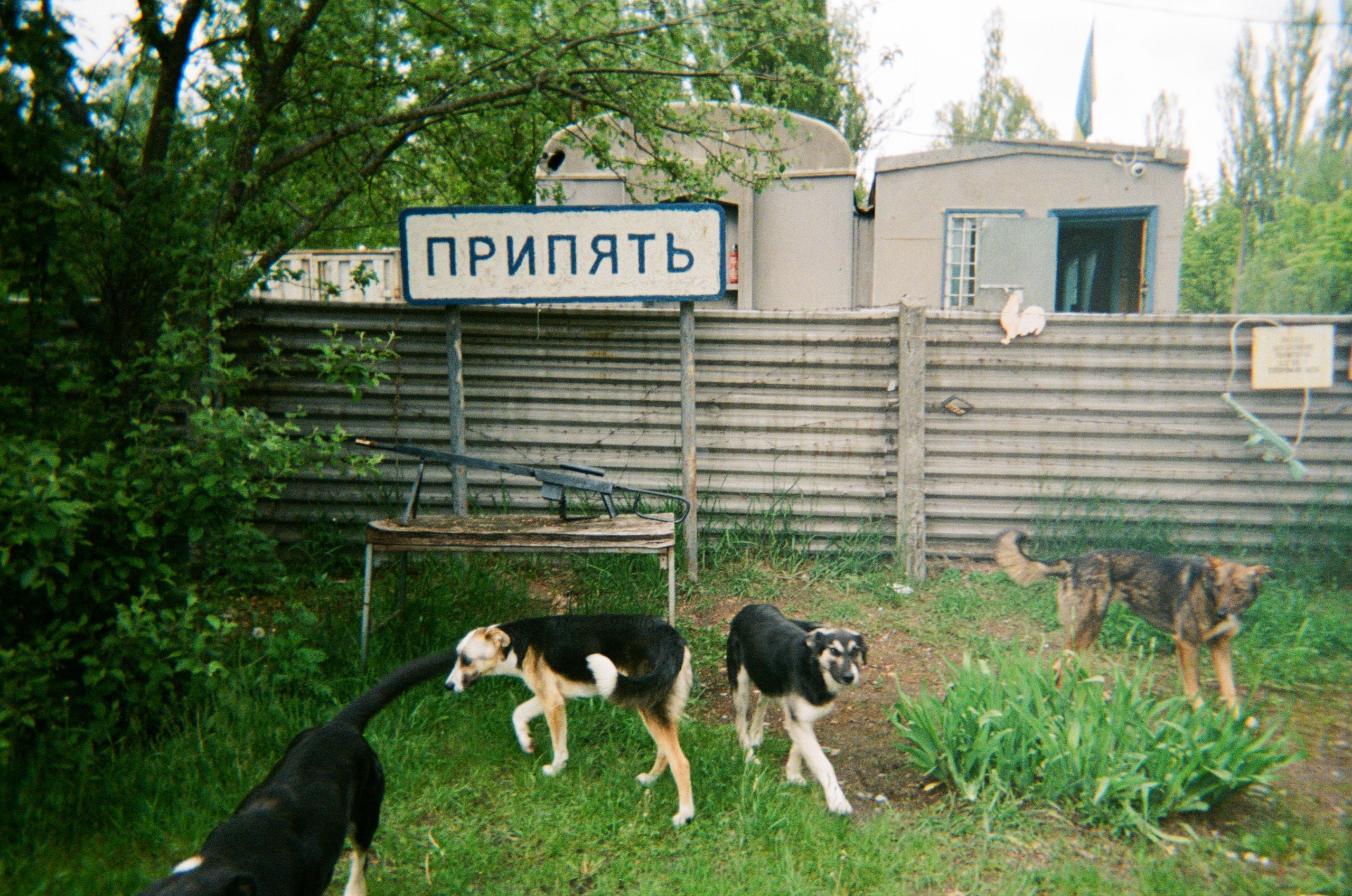
Radik, Gamma, Arka and Alpha at the Pripyat checkpoint where they live. Image credit: Jonathon Turnbull/Chernobyl Guards
Radik, Gamma, Arka and Alpha at the Pripyat checkpoint where they live. Image credit: Jonathon Turnbull/Chernobyl Guards
"I hope my research can show that you can find instances of human-animal friendship and care in the most unlikely places,” says Turnbull.
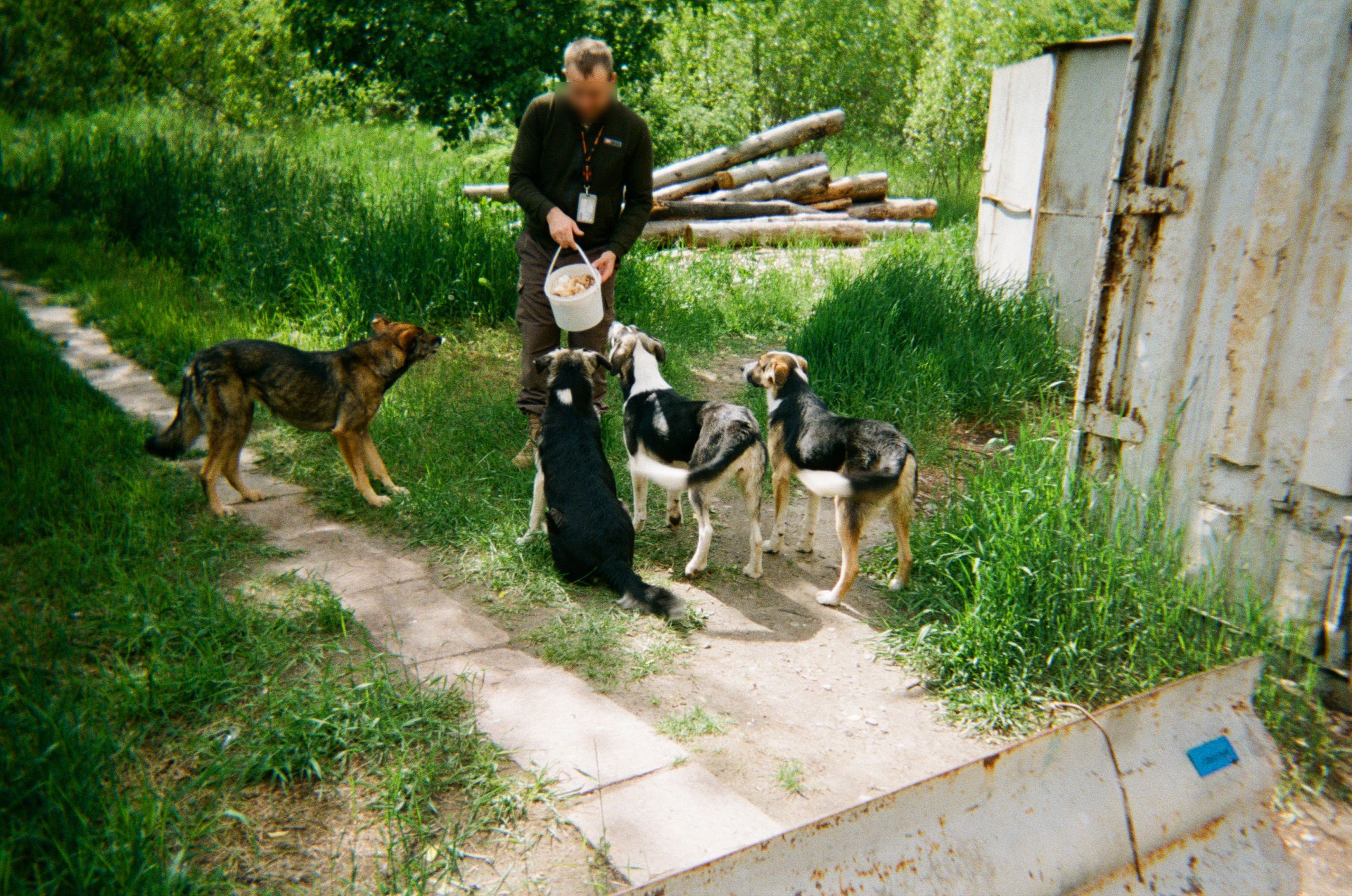
As part of his continued research, Jonathon is working on a film about the dogs - Собаки Що Вижили / The Dogs That Survived – with a Ukrainian team including director Nikita Zarkh, producer Eugene Rachkovsky of Tabor production company, and designer Karolina Uskakovych. The film will tell the story of the dogs as the protagonists and main characters, showing what life looks like for them in the Zone. “Kind of like Tarkovsky's Stalker but from the dogs' perspective,” Turnbull explains.
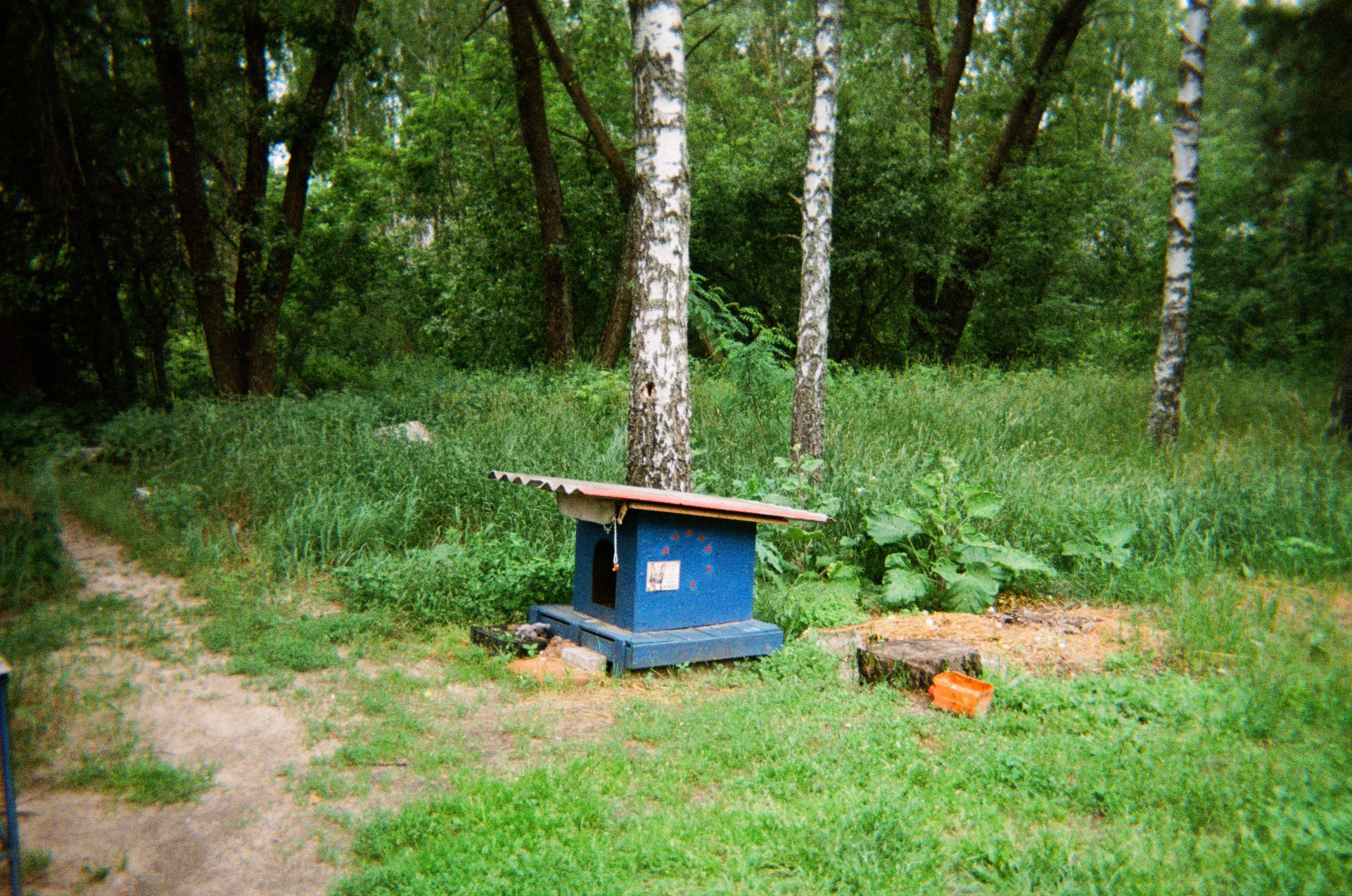
A dog house built by the guards at the Leliv checkpoint. Image credit: Jonathon Turnbull/Chernobyl Guards
A dog house built by the guards at the Leliv checkpoint. Image credit: Jonathon Turnbull/Chernobyl Guards
The relationships between the checkpoint guards and the dogs allow the Chernobyl zone to be described on an everyday level from the perspectives of those who spend the most time there. “It cuts across grand accounts that depict the zone as either a wasteland or a flourishing nature reserve, drawing attention to the ways in which life continues in spaces of disaster and ruin,” Turnbull adds. Chernobyl, as his research clearly shows, is an area where life can prevail against all odds.
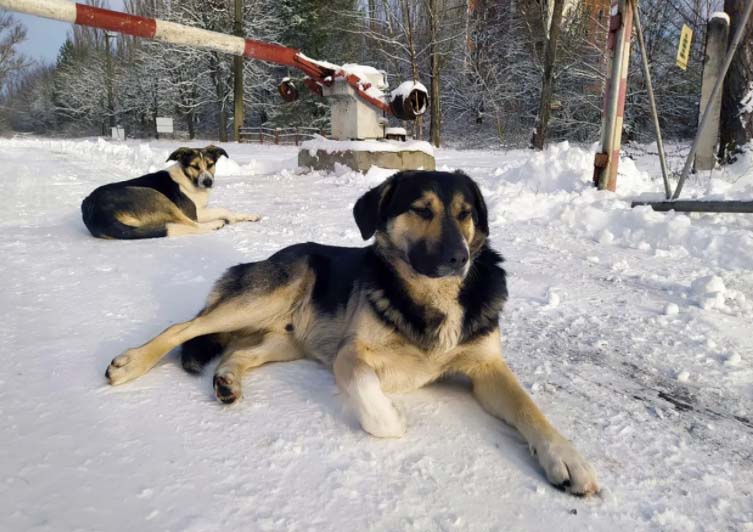
Dogs in the snow. Image credit: Jonathon Turnbull/Chernobyl Guards
Dogs in the snow. Image credit: Jonathon Turnbull/Chernobyl Guards
Jonathon Turnbull is a PhD student in the Department of Geography and King’s College, Cambridge whose research explores the more-than-human geographies of care and contamination in the Chernobyl Exclusion Zone and investigates the human-animal relations that have emerged in the Zone since the 1986 nuclear disaster. You can follow his work on Twitter: @jonnyjjt.
This research was supported by the Economic and Social Research Council UK.
Reference: Turnbull, J, Checkpoint dogs: Photovoicing canine companionship in the Chernobyl Exclusion Zone, Anthropology Today, Vol 36, No 6, December 2020

